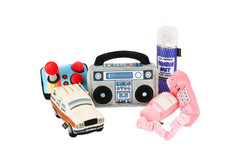Walking your furry companion is not only a pathway to their physical health but also an avenue to foster meaningful interactions within your community. The linchpin to ensuring these walks are enjoyable for everyone involved lies in observing leash etiquette. This practice encapsulates a set of courteous behaviors and legal adherence that dog owners should abide by when taking their dogs on walks. It's pivotal to familiarize oneself with local leash laws and regulations to ensure the safety and well-being of both the dog and the people around. These laws are crafted to prevent potential accidents or conflicts, marking a respectful coexistence between dog owners and the rest of the community.
Moreover, understanding and practicing leash etiquette extends a canopy of mutual benefits. For dog owners, it provides a framework to train and manage their dogs effectively, creating a bond of trust and understanding. On the flip side, non-dog owners and other members of the community can go about their daily lives without any added worry or discomfort. A leash-trained dog is less likely to cause distress or harm, thereby nurturing a harmonious ambiance in public spaces. As we delve deeper into leash etiquette in this guide, we will explore how such small considerations can significantly impact our communal living experience, making dog walking a joyful venture for all.
Understanding Local Leash Laws
The framework of leash laws can vary significantly from one locality to another, making it imperative for dog owners to educate themselves on the specific regulations governing their region. For instance, some areas mandate dogs to be on a leash at all times in public, while others may have designated off-leash areas or times. Commonly, leash laws are instituted to ensure that dogs are under control to prevent accidents, bites, or other forms of aggression.
Adhering to local leash laws is not merely about legal compliance, but it also mirrors a dog owner's sense of responsibility and consideration for others in the community. It safeguards not only people but also other animals from potential threats posed by unrestrained dogs. Moreover, obedience to these laws significantly reduces the chances of dogs getting lost, hurt, or causing traffic accidents.
Non-adherence to leash laws can result in a plethora of unfavorable consequences. Aside from facing monetary fines, dog owners could also be held liable for any damage or injury caused by their pet. In severe cases, non-compliance might lead to dogs being impounded, or owners facing legal action. These repercussions underline the essentiality of being well-versed with and adhering to the leash laws within your locality. It is a stepping stone to cultivating a culture of respect and safety as we enjoy the company of our furry companions in shared public spaces.
Choosing the Right Leash and Harness
Navigating through the myriad options of leashes and harnesses available in the market can initially seem daunting. However, making the right choice is crucial for ensuring the safety and comfort of your dog, as well as adhering to leash etiquette. There are several types of leashes including standard leashes, retractable leashes, and adjustable leashes, each with their own set of advantages and drawbacks. For instance, while retractable leashes offer more freedom of movement, they may not provide the same level of control as a standard leash, especially in crowded or high-traffic areas.
Harnesses too, come in various designs like back-clip, front-clip, and dual-clip harnesses, catering to different training levels and behaviors of dogs. The choice of a leash and harness often hinges on the size, breed, and temperament of your dog. A front-clip harness, for instance, might be beneficial for a dog that tends to pull, providing better control.
The importance of a snug, but comfortable fit cannot be overstated. A well-fitted harness and leash ensemble ensures that the dog doesn’t experience any discomfort or chafing, while also preventing the dog from slipping out of the harness. It’s advisable to seek professional assistance or consult with your vet to make an informed decision tailored to your dog's specific needs. This investment in the right equipment is the first step towards a safe, enjoyable, and etiquette-compliant walk with your furry friend.
Training Your Dog for Leash Walking
The cornerstone of leash etiquette lies in training your dog to behave well while on a leash. A well-trained dog not only reflects positively on the owner but also contributes to a safer and more enjoyable community environment. It minimizes the risks of accidents, confrontations with other animals, and discomfort to people around.
Training your dog to walk nicely on a leash without pulling requires patience, consistency, and the right techniques. Begin with short training sessions in a distraction-free environment, gradually increasing the difficulty as your dog improves. Utilize positive reinforcement methods such as treats, praises, and petting to reward your dog for good behavior. It’s also beneficial to employ a cue, like a clicker or a specific word, to signal to your dog when they are walking correctly.
Common problems during leash training may include excessive pulling, lunging, or distraction by other animals and people. Solutions often involve redirecting your dog’s attention, maintaining a calm demeanor, and practicing repetitive, consistent training. It may also be worthwhile to enroll in a professional dog training class or seek advice from a reputable trainer to address persistent issues.
Through dedicated training and positive reinforcement, you can foster a respectful leash-walking behavior in your dog, paving the way for enjoyable, stress-free outings that adhere to leash etiquette and promote a harmonious coexistence in your community.
Respectful Interactions
A significant aspect of leash etiquette entails respecting the personal space of others while out and about with your dog. Not everyone is comfortable around dogs, and some may have phobias or allergies. Similarly, other dogs might be aggressive or not well-socialized. Maintaining a respectful distance, especially when passing by others, reflects a high level of consideration and awareness.
An indispensable part of respectful interactions is picking up after your dog and disposing of the waste properly. This simple act portrays a sense of responsibility and respect for public spaces and the community at large. It keeps the environment clean, odor-free, and pleasant for everyone.
Encounters with other dogs and people are inevitable during walks. It's crucial to understand and interpret body language to gauge the comfort level and reactions of both humans and animals you come across. For instance, a stiff body or avoidance behavior in dogs may signal discomfort or aggression. Similarly, if a person seems hesitant or backs away, it’s wise to steer clear to avoid causing any distress. In handling such encounters, always keep your dog on a short leash and maintain a calm demeanor. If in doubt, it's polite to ask other dog owners or individuals if they are comfortable before allowing your dog to approach.
Adhering to these respectful interaction principles not only promotes a culture of empathy and understanding but also significantly enhances the walking experience for you, your dog, and the entire community.
Wrapping Up
Embarking on daily walks with your dog is more than just a physical activity; it's an act that intertwines with the social fabric of your community. Through this guide, we traversed the landscape of leash etiquette, delving into the importance of understanding local leash laws, selecting the appropriate leash and harness, training your dog for leash walking, and fostering respectful interactions along the way. Practicing good leash etiquette is a stride towards nurturing a positive, respectful, and enjoyable environment for all. As you step out with your furry companion, embody these guidelines to contribute to a harmonious co-existence within your community. We encourage you to share your leash etiquette tips or experiences in the comment section below, fostering a dialogue that can benefit dog owners and the community at large. Your insight could pave the way for more mindful dog walking practices, making our shared spaces more welcoming and safe for everyone.
Author: Harrison Sharrett





